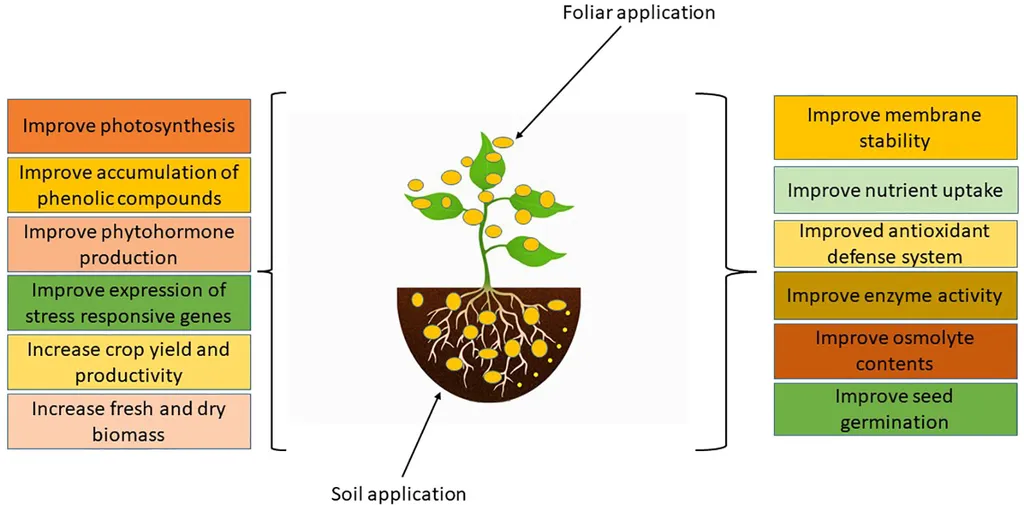In a groundbreaking study published in the open-access journal *PLoS ONE*, researchers have uncovered a novel approach to enhancing drought resilience in plants using nanoparticles. The study, led by Ana Joksimović, explores the synergistic effects of fullerenol nanoparticles (FNP) and zinc oxide nanoparticles (ZnO nano) on Arabidopsis thaliana, a model organism widely used in plant biology.
The research team characterized the chemical properties of FNP and ZnO nano, confirming the formation of a stable aggregate. They then applied these nanoparticles foliar, a method that has shown promise in previous studies. “We were particularly interested in the potential of these nanoparticles to work together to improve plant resilience under drought conditions,” Joksimović explained.
The findings were promising. Low doses of ZnO nano, applied as a foliar spray, positively influenced drought stress acclimatization in Arabidopsis thaliana. The study also reaffirmed the biostimulatory effects of fullerenol at micromolar concentrations, highlighting its unique chemical properties. “The combination of FNP and ZnO nano exhibited unique, synergistic protective effects in drought acclimation,” Joksimović noted.
The researchers found that these nanoparticles alleviate oxidative stress by mitigating the impact of reactive oxygen species (ROS), modulating antioxidant enzyme activities, and stabilizing the plant’s redox balance. This led to optimized photosynthetic performance, stomatal conductance, and water-use efficiency, particularly through fullerenol application.
The study also delved into the molecular mechanisms underlying these effects. By analyzing the expression of selected drought-response genes, the team revealed distinct gene expression changes in response to nanoparticle treatments. This demonstrated modulation of abscisic acid (ABA) signaling and stress-related transcription factors, both of which are crucial for plant drought responses.
The implications of this research are significant for sustainable agriculture, particularly in the context of climate change and water scarcity. As droughts become more frequent and severe, the need for drought-resistant crops is more pressing than ever. This study opens up new avenues for developing innovative strategies to enhance plant resilience, potentially leading to increased crop yields and reduced water usage.
Moreover, the energy sector could benefit from these findings. As the demand for biofuels continues to grow, improving the drought resilience of energy crops could enhance their viability and sustainability. This research could pave the way for more efficient and resilient biofuel crops, contributing to a more sustainable energy future.
While the study provides a promising starting point, further research is needed to fully understand the direct mechanisms linking these physiological outcomes to specific nanoparticle properties. As Joksimović noted, “Future research will further elucidate these mechanisms, paving the way for innovative strategies in sustainable agriculture.”
In the meantime, this study offers a glimpse into the potential of nanotechnology in agriculture, highlighting the importance of interdisciplinary research in addressing global challenges. As we grapple with the realities of climate change, such innovations could play a crucial role in ensuring food security and energy sustainability.

